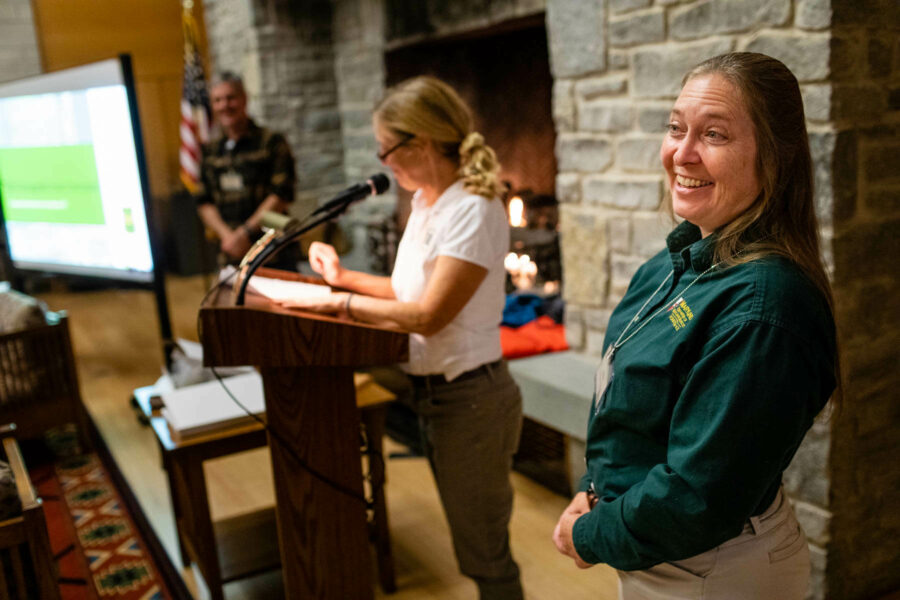Champions honored for their efforts to protect and preserve Chesapeake forests
Three award winners were celebrated at annual Chesapeake Watershed Forum

For every tree lost in the Chesapeake Bay watershed, more nutrient and sediment pollution flows through the streams and rivers that lead to this unique estuary. Because conserving our existing forests and encouraging new tree plantings are crucial to the economic and environmental health of the Chesapeake Bay watershed, the Alliance for the Chesapeake Bay and the U.S. Forest Service recognize individuals who are committed to the mission of forest conservation and reforestation every year. Three Chesapeake Forest Champions were recognized at the recent Chesapeake Watershed Forum in Shepherdstown, West Virginia.
Greatest On-the-Ground Impact
Anne Hairston-Strang has been working in forestry for over 20 years. As the associate director of the Maryland Forest Service, she has worked tirelessly to secure funding for tree plantings, provide technical support to partners and author publications, including a buffer maintenance guide. Her knowledge of forestry and its relationship to water quality, as well as her leadership, has inspired a broad range of work, including invasive species control, community tree planting, habitat conversion and watershed forest restoration. She has made a tremendous impact in the forestry world in Maryland as an advocate, leader and expert on trees and their contribution to clean water.
Most Effective at Engaging the Public
Over the past several decades, thousands of acres of forest have been cleared for development in Frederick County, Maryland, but Jan Gardner has played a key role in stopping forest loss due to land conversion and restoring forest cover. In her previous role as president of the Board of County Commissioners, she introduced legislation to increase reforestation requirements for new developments and enhanced the county’s Forest Resource Ordinance, which strengthened reforestation programs. In her current position as county executive, Gardner included strong protections for both forests and forest cover goals in the County’s Green Infrastructure Plan, which had extensive public input. Her pilot Creek ReLeaf program engages private landowners in planting riparian buffers and placing a permanent easement on reforested area. The program is expanding and growing rapidly, with 164 acres already completed and over 400 estimated in the near future.
Exemplary Forest Steward
Pennsylvania farmer Roger Rohrer joined the stewardship movement almost 20 years ago through the U.S. Department of Agriculture’s Conservation Reserve Enhancement Program, which provides financial incentives for tree plantings. As an avid hunter, Rohrer was glad to see that the riparian buffer habitat he installed drew trophy white-tail deer and buck back to his property. After seeing the benefits of installing riparian buffers, Rohrer became a mentor and leader in his community, educating his neighbors and fellow farmers about the importance of buffers. He hosted countless field days, educational tours, site visits and conference field trips focused on buffer installation and maintenance. An effective communicator and passionate advocate, Rohrer helped many in his community to see the merit of forests and establish their own streamside forests.
These outstanding leaders in conservation and restoration exemplify the passion in the Chesapeake Bay watershed community. Because of them, more trees are in the ground and many more are permanently protected.
Learn more about how forests protect the health of the Chesapeake Bay watershed.

Comments
There are no comments.
Thank you!
Your comment has been received. Before it can be published, the comment will be reviewed by our team to ensure it adheres with our rules of engagement.
Back to recent stories